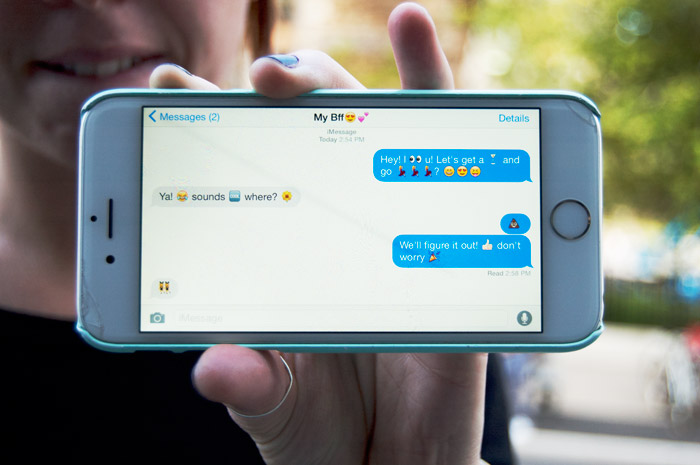As platforms like Short Message Service (SMS), Facebook Messenger, and WhatsApp grow in popularity, the amount of time people spend interacting face-to-face decreases. To make up for this, tech enthusiasts and artists have teamed up to develop novel ways to convey emotion over text. Ranging from the humble smiley to the more complex cat GIF, these seemingly innocuous images have had a huge impact on the way we communicate today.
Emoticons have been used for decades to eliminate ambiguity in the tone of a text-based message. Take, for instance: ‘You’re late ;P’ vs. ‘You’re late.’ The two messages inspire very different reactions in the reader, yet contain the same words in the same order. Studies have shown that humans react to emoticons in the same way that they respond to real facial expressions. In a study published in Social Neuroscience, scientists found that the same structures in the brain that are activated when people see faces are activated when they see emoticons. A 2014 study in The Journal of Computer-Mediated Communication found that emoticons serve the same role in text-based communication as facial expressions and other non-verbal cues do in face-to-face interaction. According to the researchers, emoticons aren’t limited to just expressing happy and sad emotions.
“When following expressive speech acts, such as thanks [and] greetings, [emojis] function as strengtheners,” the paper stated. “When following directives (such as requests, corrections, etc.) they function as softeners.”
Emoticon usage follows rules that allow the user to express politeness and respect—in addition to smiley faces.
Another report, written by the keyboard app SwiftKey, presented statistics on emoji-use by country. The French used the heart emoticon more than any other nationality, while Canadians stood out for their use of the pizza emoji. Interestingly, the type of emoticon used to express the same feeling—happiness, sadness, fear—varied depending on which country the sender was from. For example, to express happiness, 🙂 is the most popular emoticon used in North America, but in East Asian countries ^,^ is preferred.
Emoticon usage has also been found to vary between social groups. According to a study published in the Journal of CyberPsychology and Behaviour, women tend to use more emoticons than men in internet communications, although this difference in emoticon usage becomes less pronounced when people are in mixed-gender settings.
THE HISTORY:
1982:
The first officially accepted use of an emoticon took place on September 19, 1982 when Carnegie Mellon professor Scott Fahlman posted the now-iconic 🙂 on an electronic bulletin board.
1987:
The GIF file format is created by Steve Wilhite of the company Compuserve in June 1987 to improve on black and white image transfers without slowing down modems. The GIF introduced 256 colours to the image.
1992:
Les Horribles Cernettes’—a parody music group created at CERN—album cover becomes the first image file uploaded onto the internet.
1999:
The emoji was first created in Japan in 1999 by DoKoMo i-mode—a mobile phone provider in Japan—to allow their users to add pictures in their text messages.
2011:
Apple incorporates emojis into its iPhone keyboard with the release of iOS 5.
2013:
Facebook enables users to add stickers to their messenger conversations.
2015:
In May, Facebook messenger incorporates Giphy, an app which let users send GIFs to each other in comments and private messages.
THE LINGO:
ASCII:
The American Standard Code for Information Interchange (ASCII) is a way for computers to encode characters through text. It is limited to the Latin alphabet and assigns each character (i.e., letter or punctuation mark) to an integer value, which the computer then stores and uses.
Character encoding:
Used to represent characters by a set system of symbols or patterns—examples include Morse code and braille.
Unicode:
A computing industry standard used to handle character sets for almost any language.
Emoticon:
A series of ASCII characters that represent a facial expression.
Emoji:
An icon that conveys meaning by resembling the physical object. This could be, for example, showing a smiling face to convey happiness.
Bitmap:
A way that computers represent image data as a matrix of dots.
GIF:
The Graphics Interchange Format (GIF) is a bitmap image format that also supports animations.
Giphy:
App that lets you send GIF files through a messaging service.








